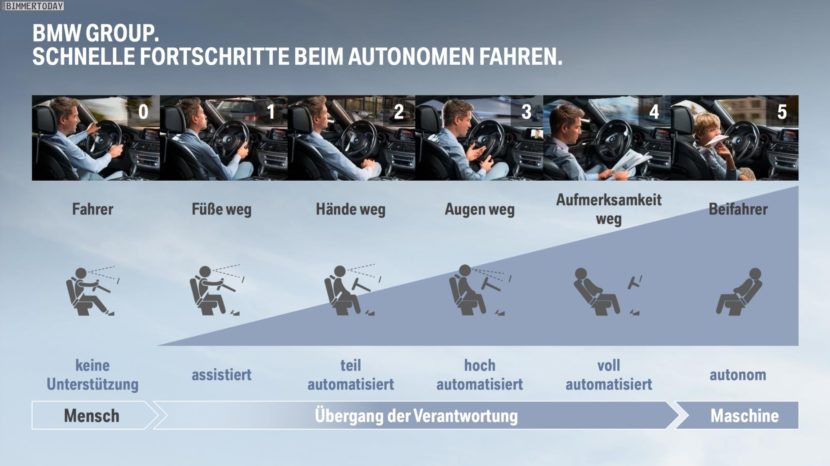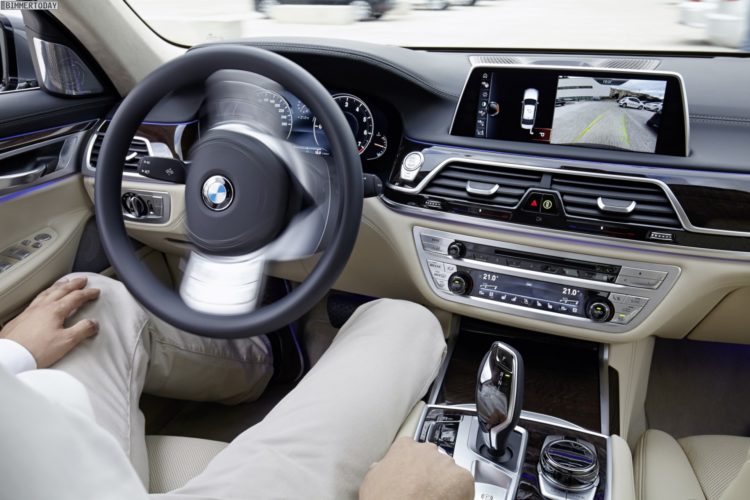The levels of autonomous driving are representative of an ever greater autonomy of the car and reduced reliance on the active cooperation of the driver. In the extreme case – called Level 5 – the driver practically becomes the passenger of an automated taxi, which brings him to his destination without any assistance. Nobody needs a steering wheel or pedals in such a vehicle, which is why some manufacturers are already thinking intensively about new interior concepts to resemble a workplace.
At the BMW Group, the customers’ wishes seem to be a little different and there is doubt that such taxis without a human driver are compatible with the values of the brand. In an interview with Automobilwoche, Elmar Frickenstein, responsible for the development of self-driving cars at BMW, has now taken a very clear position. Therefore, there is so far no decision for or against the development of a Level 5 autonomously moving “robot car” from BMW, and the focus of the development is instead on levels 3 and 4.
- Level 0 – Hands on, Eyes on
- Level 1 – Hands on, Eyes on, longitudinal or lateral guidance
- Level 2 – Hands temporary off, eyes temporary off, traffic control and longitudinal or lateral guidance
- Level 3 – Hands off, eyes off, awareness for take over, take over request
- Level 4 – Hands off, mind off, no driver intervention, no take-over request
- Level 5 – Hands off, driver off, no driver
Although the graphics still show a steering wheel even at level 5, in practice, things are likely to look different: Suppliers such as Uber or Waymo, but also Daimler and Bosch develop vehicles that drive autonomously according to Level 5 and manage without steering wheel or pedals. The “driverless automated driving” is to be used in the “Robotaxi mode” and is representative of the complete disqualification of the driver, who no longer has any influence on the drive.
At BMW, there seems to be no interest in the development of such robotic taxis. Instead, Frickenstein announces the further development of Level 3 and Level 4 systems. In this context, Frickenstein also talks about the BMW iNext, which will be launched in 2021-2022.
The announced Level 4 systems for autonomous driving will not initially be used in all customer vehicles, but will be further developed as part of a test fleet based on iNext.
Frickstein outlines the timeline for the maturity of such systems to series production:
“We will need many, many more years for a nationwide customer offer. First we have to master complex conditions like London, Rome or Cairo.”
BMW is therefore saying goodbye to seemingly limitless optimism, which has often portrayed autonomous driving at high levels in recent years – what already works well in relatively simple environments such as motorways, quickly reaches its limits in less clear city traffic or in unusual situations such as badly marked construction sites.
More and more sensors and stored information make it possible for modern cars to get an accurate picture of their surroundings. However, the range of the systems is still limited, which is why, for example, large speed differences on the highway can cause problems. Even the sometimes difficult to predict and often chaotic-looking behavior of other road users are a problem that can quickly bring self-propelled technology to its limits.
[Source: Bimmertoday]









































































